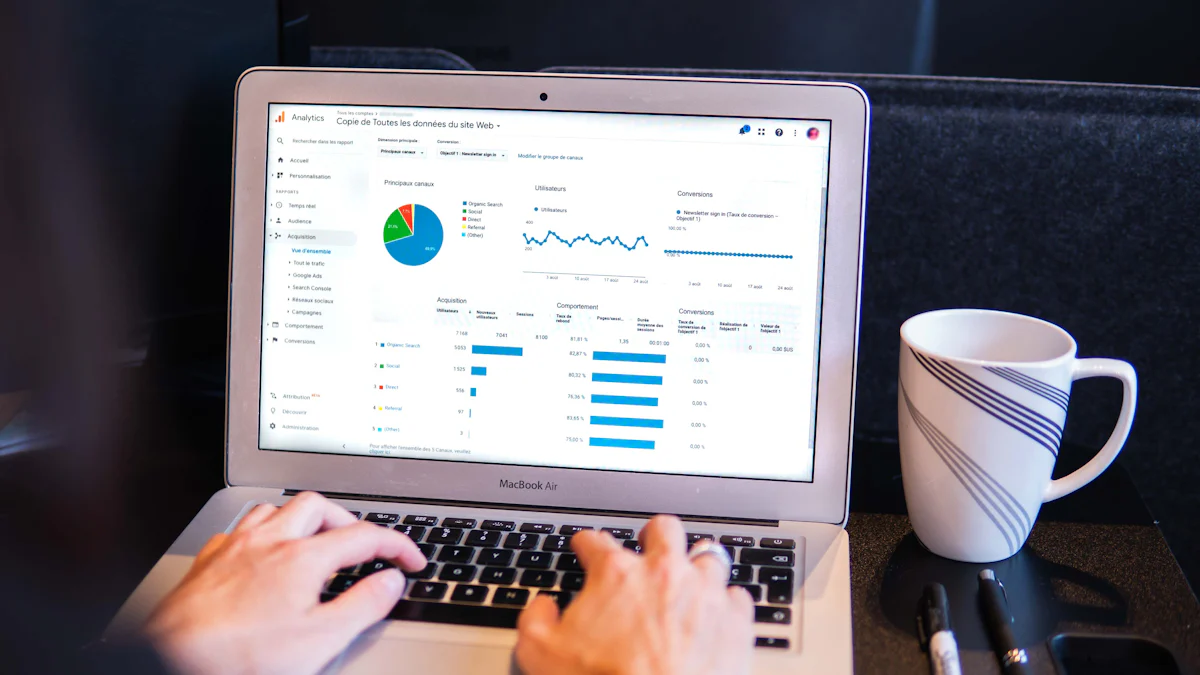A Guide to Selecting Real-time Data Platforms for Gen AI Integration

Real-time data platforms play a crucial role in ingesting and storing streaming data at scale from various sources, including sensors, social media feeds, websites, and transactional systems. As Noelle Russell, Chief AI Officer at the AI Leadership Institute, emphasizes, "In our second year of generative AI, companies are beginning to ask harder questions that were previously silenced by enthusiasm." The advent of TapData has further revolutionized data integration processes. This guide aims to explore the seamless integration of real-time data platforms with Gen AI technologies to drive enhanced analytics and automation capabilities.
Understanding Real-time Data Platforms

Real-time data platforms are essential for unifying streaming and batch data sources, leveraging modern technologies like streaming data platforms, real-time databases, and analytics engines. These platforms provide low-latency access to transformed and enriched data for downstream use cases. They combine core components of real-time streaming data architectures into a comprehensive software solution that enables data teams to ingest, integrate, analyze, and visualize data in real time.
Definition and Importance
Real-time Data: Real-time data refers to information that is processed immediately after it is created. It allows organizations to make decisions based on the most current information available.
Platforms Overview: Real-time data platforms play a crucial role in streamlining data analysis processes by providing real-time access to critical insights. They enable businesses to react promptly to changing trends and patterns in their data.
Types of Real-time Data Platforms
Open Source Variants: Open-source variants of real-time data platforms offer flexibility and customization options for organizations looking to tailor their solutions according to specific requirements.
Commercial Options: Commercial real-time data platforms provide advanced features and support services, making them suitable for enterprises with complex data processing needs.
Azure's Role in Real-time Data
Azure Services: Microsoft Azure offers a wide range of services tailored for real-time data processing, including Azure Stream Analytics and Azure SQL Database. These services empower organizations to build scalable and efficient real-time analytics solutions.
Azure Integration: Integrating Azure services with real-time data platforms enhances the overall performance and scalability of the system. By leveraging Azure's capabilities, organizations can achieve seamless integration between different components of their real-time data architecture.
Key Features of Real-time Data Platforms
Real-time data platforms offer a myriad of key features that are essential for organizations looking to harness the power of real-time analytics and data processing. These platforms are designed to handle large data volumes, ensure low-latency processing, provide robust data integration capabilities, and maintain high standards of security and compliance.
Scalability and Performance
When it comes to handling large data volumes, real-time data platforms excel in managing vast amounts of information in a seamless and efficient manner. Unified Real-Time Data Platforms stand out from other data technologies by combining elements of traditional Event Stream Processing (ESP) platforms with real-time data management. This unique combination enables these platforms to support higher volumes and lower latencies compared to most user-built ESP/data platform combinations.
In terms of low-latency processing, real-time data platforms prioritize speed and efficiency in analyzing and processing incoming data streams. By leveraging cutting-edge technologies, these platforms ensure that insights are generated in near real-time, allowing organizations to make informed decisions promptly.
Data Integration Capabilities
Real-time data platforms like TapData offer advanced data integration capabilities that streamline the process of ingesting, transforming, and analyzing data from various sources. These platforms enable organizations to unify their existing data sources, streamlining data analysis workflows for enhanced efficiency.
TapData plays a crucial role in simplifying the integration process by providing a centralized platform for managing all aspects of data integration. By offering seamless connectivity with different systems and databases, TapData ensures that organizations can leverage their existing data assets effectively.
In addition to TapData, real-time data platforms employ various data integration techniques to facilitate the seamless flow of information across different systems. These techniques include ETL processes, CDC mechanisms, and API integrations, ensuring that data is exchanged efficiently between disparate sources.
Security and Compliance
Maintaining robust data security measures is paramount for organizations leveraging real-time data platforms. These platforms implement encryption protocols, access controls, and monitoring mechanisms to safeguard sensitive information from unauthorized access or breaches.
In terms of compliance standards, real-time data platforms adhere to industry regulations such as GDPR, HIPAA, and PCI DSS to ensure that data handling practices meet legal requirements. By prioritizing compliance, organizations can build trust with customers and stakeholders while mitigating risks associated with non-compliance.
Integrating Gen AI with Real-time Data Platforms

As organizations delve into the realm of Gen AI integration with real-time data platforms, they unlock a plethora of benefits that propel their analytics and automation capabilities to new heights. By seamlessly merging the power of real-time data platforms with cutting-edge Gen AI technologies, businesses can revolutionize their data strategies and drive innovation across various domains.
Benefits of Integration
Enhanced Data Analytics: The fusion of Gen AI with real-time data platforms empowers organizations to extract deeper insights from their data streams. By leveraging advanced machine learning algorithms and predictive analytics models, businesses can uncover hidden patterns and trends in real time. This enhanced analytical prowess enables swift decision-making based on up-to-the-minute information, leading to a competitive edge in dynamic market landscapes.
Automating Repetitive Tasks: Through the integration of Gen AI with real-time data platforms, enterprises can streamline operations by automating mundane and repetitive tasks. By harnessing the capabilities of automated workflows and intelligent algorithms, organizations can optimize resource utilization, enhance productivity, and free up human capital for more strategic initiatives. This automation not only boosts operational efficiency but also accelerates time-to-insights for critical business processes.
Steps for Integration
Setting Up Infrastructure: Establishing a robust infrastructure is paramount when integrating Gen AI with real-time data platforms. Organizations need to design scalable architectures that can accommodate the high computational demands of artificial intelligence algorithms. By deploying resilient systems capable of handling diverse workloads, businesses lay a solid foundation for seamless integration and sustained performance.
Using Azure Kubernetes Service: Leveraging Azure Kubernetes Service clusters, organizations can orchestrate containerized applications efficiently within the Azure ecosystem. This cloud-native solution simplifies deployment, management, and scaling of applications, providing a flexible environment for running diverse workloads. By enhancing Azure Kubernetes Service, businesses can optimize resource allocation, improve scalability, and boost overall operational agility.
Tools and Technologies
Exploring cutting-edge tools like Azure Databricks opens new avenues for advanced analytics and machine learning within real-time data environments. With its unified analytics platform built on Apache Spark™, Azure Databricks facilitates collaborative workflows for data science teams, enabling them to harness the power of distributed computing seamlessly. Additionally, integrating Azure Cosmos DB offers unparalleled scalability and global distribution for mission-critical applications requiring low-latency access to vast datasets.
Case Studies and Examples
Successful Implementations
Industry Examples:
A global biopharmaceutical company implemented a sophisticated semantic search tool powered by Gen AI. This intelligent search system revolutionized the way medical research data was parsed and analyzed across the enterprise. By integrating Gen AI capabilities, users can now access a vast repository of client information alongside the latest medical publications to extract precise answers swiftly. The implementation resulted in a significant reduction in decision-making time, enabling a comprehensive 360-degree analysis of reports.
Lessons Learned:
An insurance company in the UK successfully enhanced its operational efficiency by deploying Gen AI solutions throughout its delivery lifecycle. By automating manual bottlenecks and seamlessly integrating Gen AI technologies, the company achieved remarkable improvements in velocity and agility. The efficiencies gained translated into an impressive 18% reduction in overall QA costs and a staggering 90% decrease in data framework development time.
Challenges and Solutions
Common Obstacles:
One of the common challenges faced during Gen AI integration is bridging the gap between business intelligence (BI) systems and decision-makers effectively. To address this obstacle, a major airline built a test environment mirroring its live ecosystem's data structures. Leveraging Gen AI's SQL generator, business users can now effortlessly identify their required data insights, with AI automatically generating the necessary SQL code for data extraction. Early assessments indicate an 80% efficiency gain in extracting valuable insights from the data warehouse.
Effective Strategies:
In the healthcare sector, a Middle Eastern nation's Department of Health successfully developed a virtual clinician powered by AI technology, complete with an interactive avatar interface. This innovative solution aims to enhance patient care experiences by providing personalized virtual consultations. By leveraging Gen AI advancements, healthcare providers can offer more accessible and efficient healthcare services to their communities while ensuring seamless interaction between patients and virtual clinicians.
Conclusion
Real-time data analytics can offer organizations a wide range of use cases. Many industries and businesses utilize real-time data analytics to get insights and make decisions based on data collected in real time. Real-time data analytics is widely used across different sectors for decision-making based on real-time data.
GenAI can be leveraged by professionals to streamline tasks, enhance output, and stand out in their field. Generative AI tools can assist in real-time risk monitoring and demand forecasting. GenAI offers professionals the opportunity to improve efficiency and productivity in their work. Generative AI tools have practical applications in risk assessment and demand prediction. By integrating Gen AI with real-time data platforms, organizations can unlock new possibilities for innovation and growth, driving enhanced analytics capabilities and automation efficiencies. Embracing the power of real-time data platforms alongside Gen AI technologies opens doors to transformative solutions that redefine how businesses operate in today's dynamic digital landscape.
See Also
Instant Data Insights: Harnessing the Potential of Real-Time Processing
Making the Right Choice: Airbyte Cloud vs. Alternative Data Integration Platforms
Discovering Tools and Technologies for Real-Time Data Processing
Tapdata: Empowering Real-Time Data Integration
Optimizing Data Integration: Features, Functions, and Pricing of Top Tools

